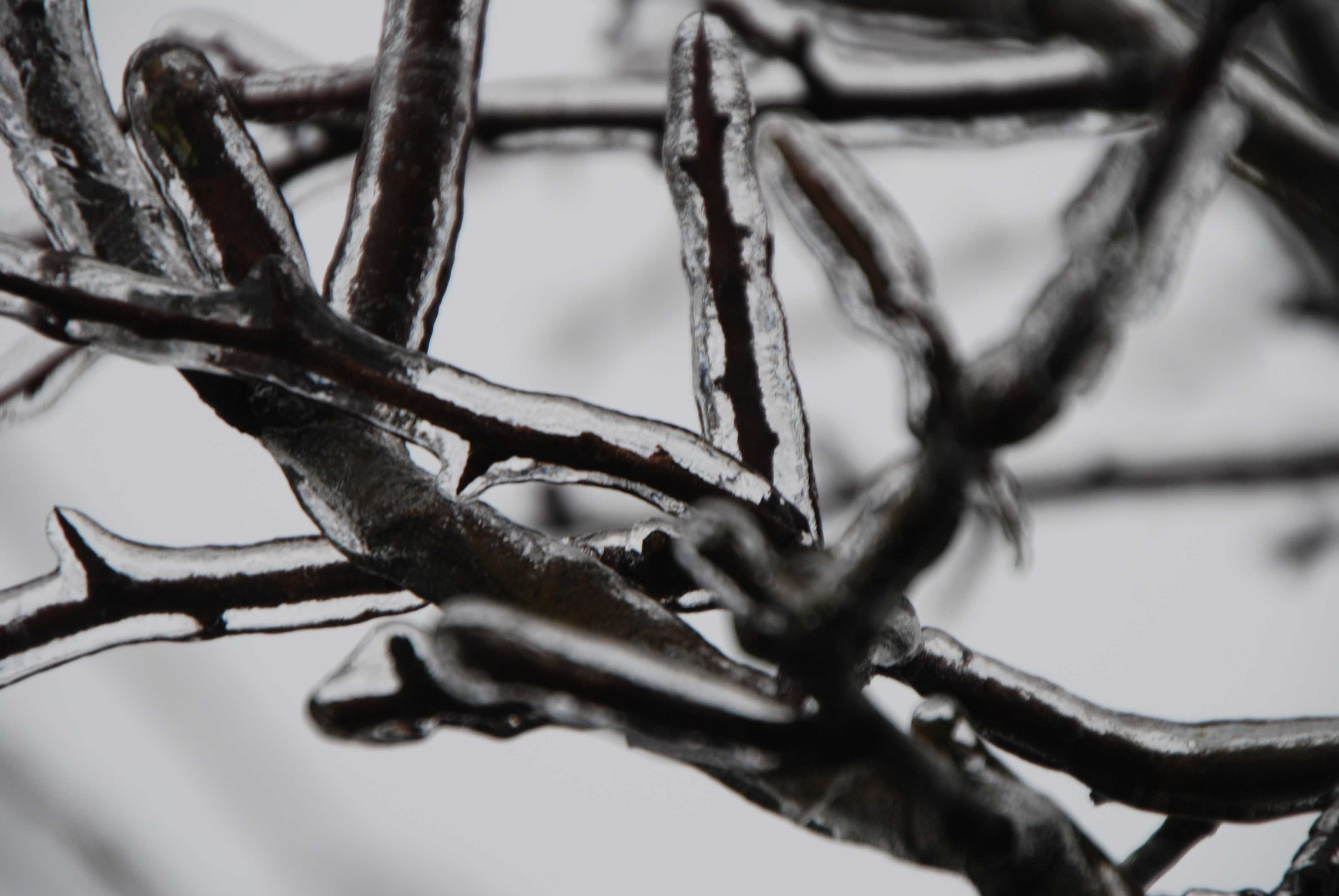Glaze
(Section 3.2.1.4.6)Definition: Glaze: A smooth compact deposit of ice, generally transparent, formed by the freezing of supercooled drizzle droplets or raindrops on objects with a surface temperature below or slightly above 0 °C.
Glaze covers all parts of surfaces exposed to precipitation. It is generally fairly homogeneous and morphologically resembles clear ice. At or near the ground, glaze forms when drizzle droplets or raindrops become supercooled as they fall through a layer of air at a sub-frostpoint temperature. In the free atmosphere, glaze is observed when aircraft are exposed to supercooled precipitation. Glaze forms by the slow freezing of supercooled liquid water and so penetrates the air gaps between the particles of ice before freezing.
The deposit of ice formed by the freezing of fog or cloud droplets not supercooled at the time of impact with objects at temperatures well below 0 °C, is also known as glaze.
Glaze on the ground must not be confused with ground ice, which, on a road surface, is known as “black ice”. Ground ice is formed when water from precipitation of non-supercooled drizzle droplets or raindrops later freezes on the ground, when snow on the ground refreezes after having completely or partly melted, or when snow on the ground is made compact and hard by traffic.




